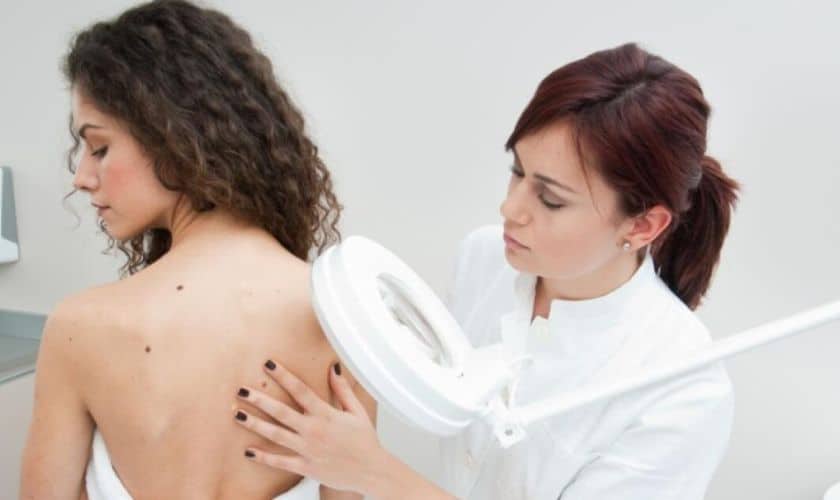Are you considering Mohs surgery? Wondering what it entails or if it’s the right option for you? Look no further! In this comprehensive guide, we will walk you through everything you need to know about Mohs surgery. Whether you’re a first-timer or just looking to brush up on your knowledge, we’ve got you covered. So sit back, relax, and let’s dive into the fascinating world of Mohs surgery!
What is Mohs Surgery?
Mohs surgery, named after its founder Dr. Frederic E. Mohs, is a highly specialized and precise surgical technique used to treat certain types of skin cancer. What sets Mohs surgery apart from other procedures is its unique approach to removing cancerous tissue layer by layer until no further signs of the disease are detected.
The procedure begins with a local anesthetic being administered to numb the area around the affected site. Then, using a scalpel, the surgeon removes the visible tumor along with a thin layer of surrounding healthy tissue. This tissue is immediately examined under a microscope to determine if any cancer cells remain.
If cancer cells are found during this analysis, another layer of tissue is removed only from the area where they were identified. The process continues until all margins show no evidence of cancer remaining.
This meticulous approach allows for increased precision and minimizes damage to healthy skin while ensuring that all cancerous cells are eliminated within each stage.
Due to its high success rate and minimal scarring potential, Mohs surgery has become widely regarded as one of the most effective treatments for basal cell carcinoma (BCC) and squamous cell carcinoma (SCC), especially when located on sensitive areas like the face or genitals.
By targeting only diseased tissues while preserving healthy skin as much as possible, Mohs surgery offers patients an excellent chance at both curing their condition and achieving aesthetically pleasing results.
Types of Mohs Surgery
There are different types of Mohs surgery that can be performed, depending on the specific needs of each patient. The most common type is standard Mohs surgery, which involves removing layers of skin one by one and examining them under a microscope to check for cancer cells. This process is repeated until all the cancer cells have been removed.
Another type of Mohs surgery is called frozen-section controlled excision. In this procedure, the surgeon removes a thin layer of tissue and immediately freezes it. The frozen tissue is then examined under a microscope to determine if there are any cancer cells present. If cancer cells are found, another layer is removed and examined in the same way.
Micrographic dermatologic surgery (MDS) is another variation of Mohs surgery that can be used to treat certain types of skin cancers. It involves removing small sections of tissue at a time and examining them under a microscope before proceeding with further removal if necessary.
In some cases, radiation therapy may also be used in conjunction with Mohs surgery to target any remaining cancer cells after the initial removal process.
The type of Mohs surgery recommended will depend on various factors including the size and location of the tumor, as well as individual patient characteristics such as age and overall health.
It’s important for patients to consult with their dermatologist or surgeon to determine which type of Mohs surgery would be most appropriate for their specific situation. Each case is unique, and an experienced healthcare professional will be able to provide guidance based on individual circumstances.
What to Expect After Mohs Surgery
After undergoing Mohs surgery, it is important to know what to expect during the recovery process. While each individual’s experience may vary, there are some common things that you can anticipate.
Immediately after the procedure, you may feel some discomfort or pain in the treated area. Your surgeon will provide instructions on how to manage this, which may include over-the-counter pain medication or prescription painkillers. It is also normal to experience swelling and bruising around the surgical site.
You will likely have a dressing or bandage covering the wound, which should be kept clean and dry as directed by your surgeon. They may also recommend applying an antibiotic ointment regularly to prevent infection.
It is important to avoid strenuous activities and keep the affected area protected from sunlight until it has fully healed. The healing process can take several weeks, during which time you may notice scabbing or crusting of the wound. This is a natural part of the healing process and should not be picked at or disrupted.
Follow-up appointments with your surgeon will be necessary to monitor your progress and ensure proper healing. They will guide you on when it is safe to resume normal activities and skincare routines.
Remember that everyone’s recovery journey is unique, so it’s essential to follow your surgeon’s specific post-operative instructions for optimal results.
Recovery Time After Mohs Surgery
After undergoing Mohs surgery, it is important to understand the recovery process and what to expect. The length of time it takes to recover can vary depending on several factors, including the size and location of the removed skin cancer.
Immediately after surgery, you will likely experience some discomfort and swelling in the treated area. Your doctor may prescribe pain medication or recommend over-the-counter pain relievers to help manage any discomfort. It is also common for patients to have a dressing or bandage covering the wound.
In most cases, patients can resume normal activities within a day or two after Mohs surgery. However, it is essential to follow your doctor’s post-operative care instructions carefully. This may include keeping the wound clean and dry, avoiding rigorous physical activity that could disrupt healing, and regularly applying any prescribed ointments or creams.
The complete healing process can take several weeks or even months depending on the extent of the surgery. During this time, you may notice redness at the surgical site as well as some scarring. It is crucial to protect your skin from sun exposure during this period as it can delay healing and increase your risk of complications.
While everyone’s recovery timeline may be slightly different, if you experience excessive bleeding, signs of infection such as increased redness or pus drainage from the site, severe pain that does not improve with medication, or any other concerning symptoms, contact your healthcare provider immediately.
Remember that each person’s recovery journey is unique; therefore never compare yourself with others who have undergone similar procedures before!
Complications After Mohs Surgery
While Mohs surgery is generally considered a safe and effective procedure, like any surgical procedure, there can be potential complications. It’s important to be aware of these complications so you know what to expect and can take appropriate measures if they arise.
One possible complication after Mohs surgery is infection. The surgical site may become infected, resulting in redness, swelling, pain, or discharge. In some cases, antibiotics may be prescribed to treat the infection. It’s crucial to keep the wound clean and follow your surgeon’s post-operative care instructions to minimize the risk of infection.
Another potential complication is bleeding. Although rare, excessive bleeding can occur during or after Mohs surgery. Your surgeon will take precautions during the procedure to control bleeding; however, it is essential to report any unusual or prolonged bleeding promptly.
Scarring is another consideration after undergoing Mohs surgery. While every effort will be made by your surgeon to minimize scarring using meticulous closure techniques and sutures designed for optimal healing with minimal scarring potential such as absorbable sutures on deep layers and non-absorbable sutures that are removed by your doctor later on superficial skin layers if necessary – scars are an inevitable part of the healing process.
Numbness or altered sensation in the treated area may also occur following Mohs surgery due to nerve damage caused during removal of cancerous tissue. This usually improves over time but may persist in some cases.
Allergic reactions or adverse effects from local anesthesia might occur though they’re quite rare—your surgeon will conduct a thorough evaluation before administering anesthesia medications—to ensure patient safety at all times.
Remember that while these complications exist as possibilities when considering Mohs surgery—the likelihood of experiencing them remains relatively low overall! Always consult with a qualified dermatologist who specializes in this technique for more detailed information on risks associated with your specific case!
Mohs surgery is a highly effective procedure for the treatment of skin cancer. It offers several advantages over traditional surgical methods, including higher cure rates and minimal damage to healthy tissue. By removing thin layers of tissue one at a time and examining them under a microscope, Mohs surgery ensures complete removal of cancer cells while preserving as much healthy skin as possible.
There are different types of Mohs surgery available, depending on the size and location of the tumor. Your dermatologist will determine which type is most suitable for your specific case.
After undergoing Mohs surgery, it is normal to experience some discomfort and swelling in the treated area. However, following proper post-operative care instructions can help minimize these side effects.
Recovery time after Mohs surgery varies from patient to patient but generally takes about two to four weeks. During this period, it’s essential to follow all post-operative instructions provided by your surgeon to promote healing and prevent complications.
Although rare, complications can arise after Mohs surgery. These may include infection or bleeding at the surgical site or delayed wound healing. It is crucial to report any unusual symptoms or concerns promptly so that they can be addressed by your healthcare provider.
If you have been diagnosed with skin cancer and are considering treatment options, consult with a qualified dermatologist who specializes in Mohs surgery. They will assess your condition and provide you with personalized recommendations based on your unique needs.
Remember that early detection plays a vital role in successful treatment outcomes for skin cancer. Regular self-examinations and annual full-body checks by a dermatologist are crucial for detecting any suspicious lesions or changes on your skin.
By staying informed about skin cancer prevention strategies and understanding the benefits of procedures like Mohs surgery, you can take proactive measures toward maintaining healthy skin throughout your life.

